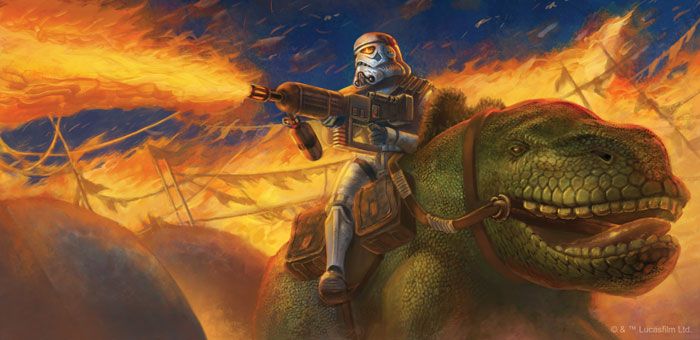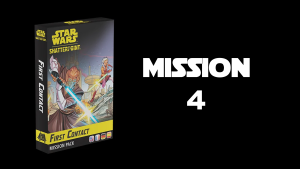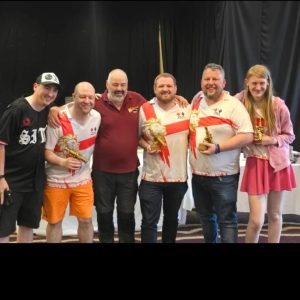**Disclaimer: When this article was published, this was the working “concept” of the time and the article was intended as an overview for Invader League Season 4. Since then, we have had an official RRG Forums Update from FFG that says that, “The space created by the notch in a unit’s base should be treated as a part of that unit’s base by other units. Therefore, no mini’s base may be placed inside the notches of another mini’s base.” I hope this article now serves as an example of some of the anomalies that this rule is necessary to prevent.
This may come as a surprise based on the amount of discussion that has already occurred, but Tauntaun Riders have only been out in the wild for a month, and the Dewbacks delayed release has meant that only a small number of people own them. Despite this, a number of interesting and unique movement and engagement scenarios and rules questions have arisen. Today, I would like to very briefly discuss some of the common situations that I have run into, and provide a concise, clear resolution for them.
This is meant to be a very quick overview (perhaps to get you ready for Invader League Season 4?) in which I will list and go over some of the relevant rules from the Rules Reference Guide, before diving into some Tabletop Simulator created examples, graciously provided to us by Sploosh. Please feel free to reach out to Zach or myself specifically if you have any questions, and be sure to join the Discord or Facebook and ask the community. As a fair warning, today’s article is fairly straightforward, to the point, and slightly dry in nature, but will clarify a number of commonly asked questions.
Lets first take a look at some important creature trooper rules. These can be found in the rules reference guide under the headings Creature Troopers, Displacement, Creature Trooper Movement, Reposition, and Standard Move, on pages 29, 35, 50, 59, and 65.
- Creature Troopers, pg 29
- Creature troopers cannot be displaced.
- Trooper and Ground Vehicle minis cannot move through creature troopers
- Displacement, pg 35
- If a unit leader was displaced, it must be placed within range 1 of its original position.
- Creature Trooper Movement, pg 50
- A creature trooper mini cannot move through or displace a trooper mini that is engaged.
- A creature trooper mini cannot move through or displace emplacement trooper minis.
- A creature trooper mini cannot move through or displace other creature trooper minis.
- While engaged, creature trooper units do not have to withdraw to perform moves and can displace non- creature, non-emplacement trooper units with which they are engaged while doing so.
- Reposition, pg 59
- When a unit with the reposition keyword is being moved by an opponent, such as via the Force Push upgrade card, the reposition keyword can be used by the opponent during that move.
- Standard Move, pg 65
- All speed-x moves are standard moves.
- Pivot, Reverse, Climb, Clamber, Embark, and Disembark are not standard moves.
That’s quite a bit of text isn’t it? The main things to take note of, and the examples we will explore shortly, are that creature troopers cannot move through other creature troopers, emplacement troopers, and ground vehicles. Additionally, force push cannot be used to reverse a creature trooper, but you can trigger reposition with them.
Let’s take a quick look at some examples.

You are Luke Skywalker in this example. Luke is engaged with the tauntaun currently, and is attempting to escape the melee. There are three ways for Luke to escape: withdraw, force push, or kill the tauntaun. Withdraw and elimination are pretty straightforward, so let’s focus on the force push. Force Push reads that you “perform a speed-1 move with that unit, even if it is engaged.” This wording is important because all speed-1 moves are standard moves, and reverse is defined as not being a standard move (pg. 65). Therefore, Luke cannot force push the tauntaun backwards. This means that the only other force push option is to actually displace Luke himself, because the tauntaun’s base will cross over Luke’s base, even if reposition is triggered from force push. Per the displacement rules (pg. 35), because you are performing the movement with the tauntaun model, your opponent places Luke within range 1 of his current position, potentially putting him in a dangerous location.

In this example, the red tauntaun has moved into position to block the blue tauntaun’s forward movement. Creature troopers cannot move through other creature troopers (pg. 50), and therefore the blue model only has one option: reverse. If you look closely at the models, even if the blue model pivots the full 90 degrees to its right, a small portion of the base would still move through the red base, making the movement illegal. This can be seen in the following graphic.

This example can be the most difficult one to resolve because the smallest sliver counts as a movement through another model, and sometimes this situation can be unclear and result in a judge needing to be called.

In this example, both models have their forward notches locked inside of their opponent’s notch, resulting in a stalemate. Despite the complex looking nature of this engagement, it is actually one of the simplest examples. Neither model can pivot in any direction without crossing through the other’s base, and this leaves only one option again: reverse.

In contrast to the linked bases in the example above, this melee does not have as many restrictions. Both units are able to clearly reverse, and also have the ability to pivot to escape. However, in order to ensure that no base overlap occurs, the full 90 degree pivot must be taken, and a straight movement must follow. Anything less than the full 90 degree pivot would result in the movement template being dragged across the opponent’s mini’s base.
As a bonus, let’s take a quick look at a hot button detachment ruling: when deploying the detachment unit, can you place the emplacement anywhere within range 1, including on top of a building? The short answer? Yes.

As goofy as this may seem, we currently do not have any language or text preventing a MK2 or Mortar from being deployed on top of a height 3 building, as long as it is within a speed one movement distance from its assigned corp unit. While it’s possible that this is clarified at a later date, there is already a tournament precedence from NOVA to allow this occurrence.
One final note: Do you like big archways over looking the water? Do you want to visit the current city that (unforunately) holds the Stanley Cup ? Have you watched War Corgi on Youtube and want to meet a Legion celebrity along with Legion’s top judge Brendon Franz? Well, I have the place for you! Join Brendon and crew at Warfaire Weekend this November 8th and 9th for the second of three Grand Championships this Legion tournament season! Earn cool swag, win a seat to come join Zach and I at next year’s High Command (aka Worlds), and receive free airfare if you win the whole thing! Sign ups are here.
-Mike






2 Responses
I think we need clarification on if the notch is meant to be treated as an actual part ? f the model, or if the intent was to treat the notched bases as if they were a complete circle.
I also think the rules need to specify if units can displace on a pivot, at the moment only ground vehicles are specifically called out as being able to displace and only if it’s a non-round base.
I 100% agree that we need clarification on whether or not the notch is intended to be a circle or not, though I do believe it is intended to be a part of the model, and the length of movement changes from notch to notchless because of the indent.
In terms of the pivot displacement, pg. 29 states creature troopers displace when they move through trooper units. Pivot on pg. 54 states that it is a type of movement. Therefore, I believe that pivoting does cause displacement currently, but I agree again, until that’s proven otherwise, we need more clarification.